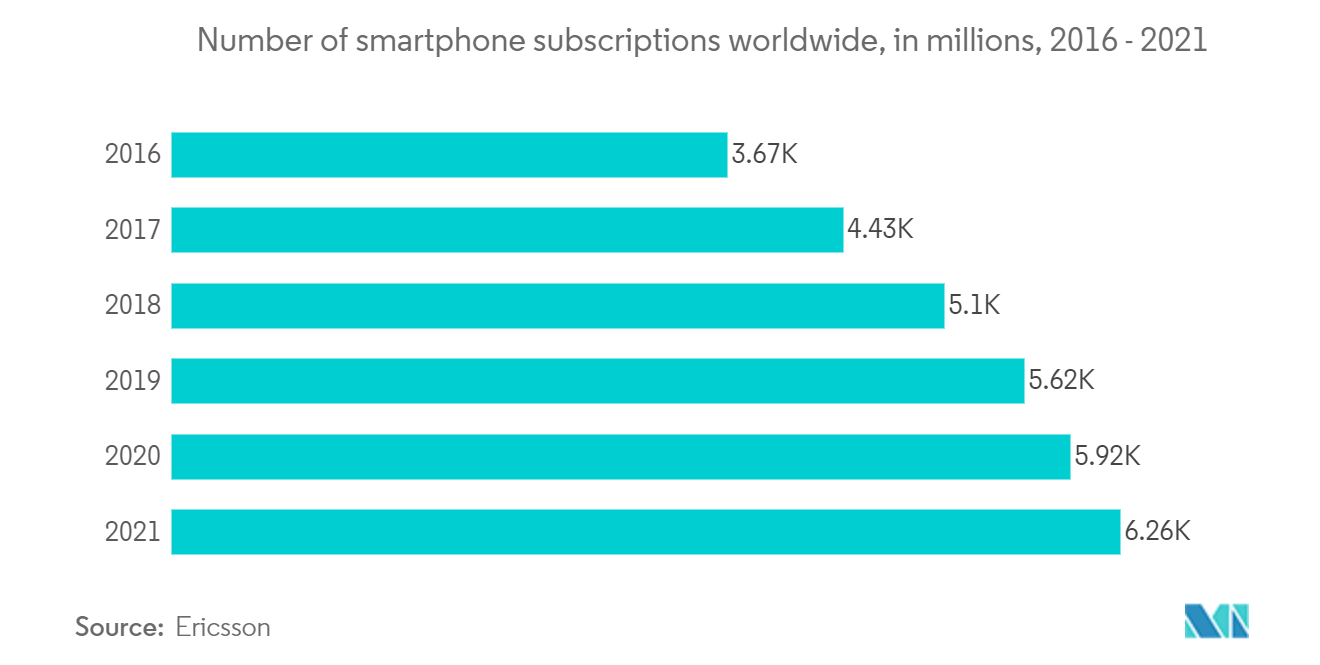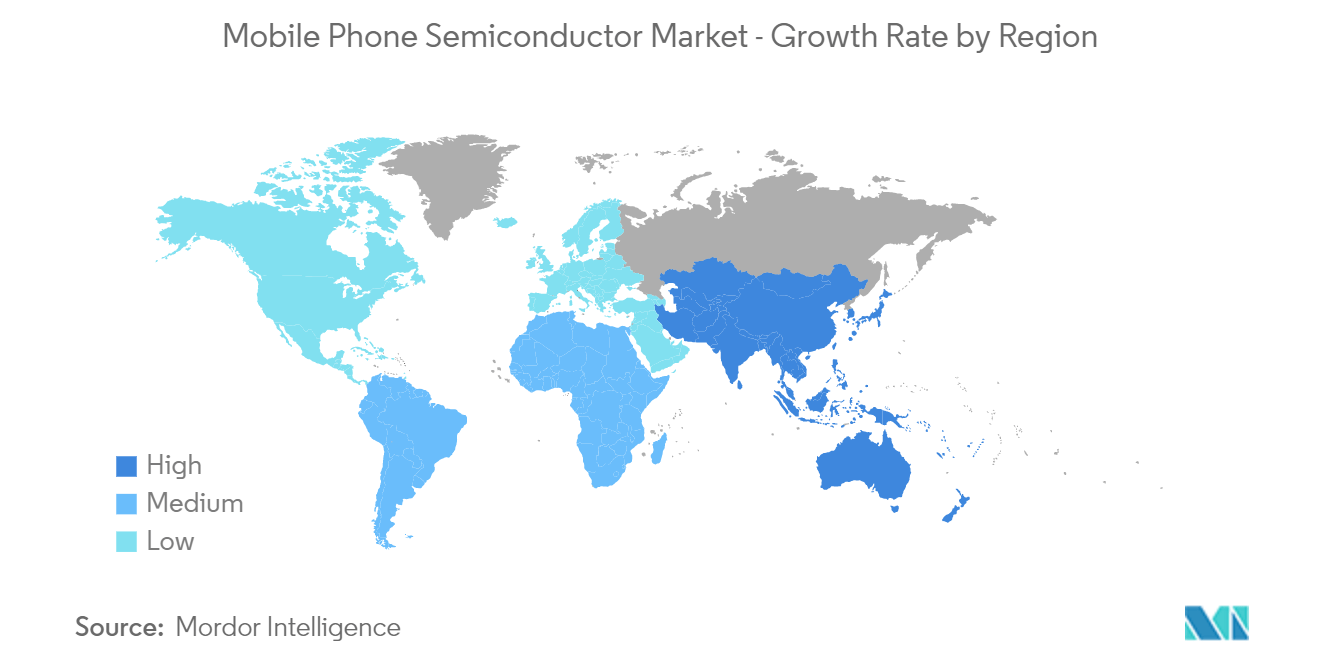Market Trends of Mobile Phone Semiconductor Industry
This section covers the major market trends shaping the Mobile Phone Semiconductor Market according to our research experts:
Memory to Significantly Drive the Market
- A large portion of the growth in this segment would be driven by ongoing technological advancements such as cloud computing and virtual reality in end devices such as smartphones. Sharply higher average selling prices (ASPs) for dynamic random access memory (DRAM) and NAND flash chips also substantially generate revenues.
- In general, the expected price decreases would be offset by new capacity for flash memory and for DRAM, which would result in a better balance of supply and demand for these devices to support more latest applications such as enterprise solid-state drives (SSDs), augmented and virtual reality, artificial intelligence, graphics, and other complexes, real-time workload functions.
- However, emerging memory technologies are poised to cannibalize huge chunks of the DRAM demand in the industry. In August 2022, Micron Technology Inc., announced its plan to spend USD 40 billion through 2030 to expand its semiconductor production capacity in the United States.
- Micron's DRAM chips are used for applications in a variety of devices ranging from smartphones to data center servers. The company's plan to expand its manufacturing unit in the United States is expected to be supported by various credits and grants under the CHIPS and Science Act. Such initiatives by the company is expected to promote the demand for memory in the market providing a positive push to the mobile phone semiconductor market during the forecast period.

Asia-Pacific to Hold a Dominant Position in the Mobile Phone Semiconductor Market
- Asia-Pacific is one of the major markets for mobile phone and semiconductor technologies. The region is dominating semiconductor and smartphone manufacturing fields. Most of the major companies, in both the markets, are based in the Asia-Pacific region, while the remaining companies have a presence in the region.
- The region also dominates the global semiconductor market. The increasing smartphone and semiconductor production, especially in emerging countries, is also augmenting the mobile semiconductor demand in the region. Countries like India, Vietnam, Thailand, and Singapore, among others, are witnessing an increasing number of smartphone manufacturers setting up their manufacturing plants in the region.
- For instance, in November 2022, Apple announced its plan to open one of its largest manufacturing unit in India under the 'Make in India' initiative by the Indian Government. The new manufacturing unit is expected to be Apple's largest manufacturing unit in the region. Such initiatives by the company in the region are expected to ppromote the mobile pone semiconductor market in the region.
- China, South Korea, Japan, Singapore, and Taiwan are some of the highly developed semiconductor producers in the region. However, countries, like Malaysia and India, are also emerging as potential markets. The smartphone market is also massive in these countries; hence, they can offer enormous opportunity for the market studied too. Malaysia is emerging as one of the vital semiconductor export markets.
- In May 2021, South Korea announced its ambitious plans to spend roughly USD 450 billion to build the world's biggest chipmaking base over the next decade. joining China and the U.S. in a global race to dominate the key technology. Moreover, with the shift of various major companies to the


